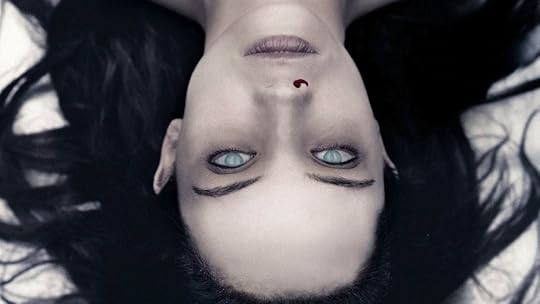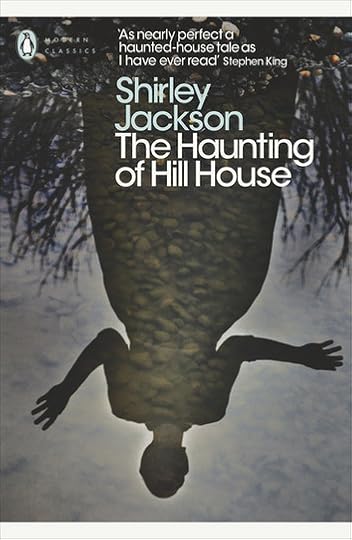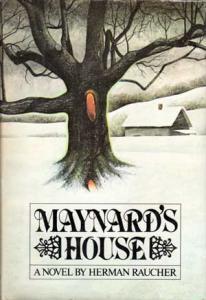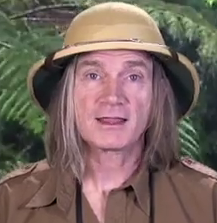M.V. Clark's Blog, page 6
December 22, 2017
December 20, 2017
Guts Reaction: The Autopsy of Jane Doe

Olwen Kelly terrifies as Jane Doe. She may be the best thing in the movie.
The Autopsy of Jane Doe is an American supernatural horror directed by Norwegian Andre Ovredal, who directed the brilliant Troll Hunter.
It stars Brian Cox as Tommy Tilden and Emile Hirsch as his son Austin.
Tommy is a a forensic pathologist and Emile works as his assistant. A harried local police chief ask them to rush through the autopsy of an unidentified young woman who’s been found in a basement. She’s in immaculate condition, but the rest of the house is full of blood-soaked corpses.
Tommy and Austin apply themselves with grim professionalism to trying to solve the mystery of how ‘Jane Doe’ died, but gradually things take an unnerving turn.
The Autopsy of Jane Doe does a beautiful job with a classic horror trope – our fear that the dead will return. It takes the people we trust to look violent death in the eye – forensic pathologists – and strips them down.
It also, I thought, takes a subtle swipe at expectations of female beauty. Maybe I'm just desensitized after watching The Corpse of Anna Fritz, which features graphic necrophilia. But Jane Doe’s body is eerily perfect and this is not a good thing.
The Autopsy has the most wonderful contrapuntal structure. There’s the obvious like a certain sound effect that appears at the beginning and the end of the movie with very different meaning. There’s relationship between father and son, marked by love and conflict.
Then there’s the less obvious, like Austin’s girlfriend’s benign insinuation into the male space of the morgue. This foreshadows the more sinister insinuation of Jane Doe.
These parallels and pairings should ring like bells. They should sing like a choir. And for the first half of the film, they do.
But it all gets lost in the second half. There’s nothing wrong with the acting – when has Brian Cox ever disappointed? But somehow these potentially powerful counterpoints miss each other, they don’t ring out. The denouement feels silly and anticlimactic.
The only exception to this is Jane Doe herself, played by Olwen Kelly. Her blank face terrified me in every shot.
And horror films often reveal wonders on a second or third viewing. I’d certainly watch this film again.
The Autopsy of Jane Doe

Olwen Kelly terrifies as Jane Doe. She may be the best thing in the movie.
The Autopsy of Jane Doe is an American supernatural horror directed by Norwegian Andre Ovredal, who directed the brilliant Troll Hunter.
It stars Brian Cox as Tommy Tilden and Emile Hirsch as his son Austin.
Tommy is a a forensic pathologist and Emile works as his assistant. A harried local police chief ask them to rush through the autopsy of an unidentified young woman who’s been found in a basement. She’s in immaculate condition, but the rest of the house is full of blood-soaked corpses.
Tommy and Austin apply themselves with grim professionalism to trying to solve the mystery of how ‘Jane Doe’ died, but gradually things take an unnerving turn.
The Autopsy of Jane Doe does a beautiful job with a classic horror trope – our fear that the dead will return. It takes the people we trust to look violent death in the eye – forensic pathologists – and strips them down.
It also, I thought, takes a subtle swipe at expectations of female beauty. Maybe I'm just desensitized after watching The Corpse of Anna Fritz, which features graphic necrophilia. But Jane Doe’s body is eerily perfect and this is not a good thing.
The Autopsy has the most wonderful contrapuntal structure. There’s the obvious like a certain sound effect that appears at the beginning and the end of the movie with very different meaning. There’s relationship between father and son, marked by love and conflict.
Then there’s the less obvious, like Austin’s girlfriend’s benign insinuation into the male space of the morgue. This foreshadows the more sinister insinuation of Jane Doe.
These parallels and pairings should ring like bells. They should sing like a choir. And for the first half of the film, they do.
But it all gets lost in the second half. There’s nothing wrong with the acting – when has Brian Cox ever disappointed? But somehow these potentially powerful counterpoints miss each other, they don’t ring out. The denouement feels silly and anticlimactic.
The only exception to this is Jane Doe herself, played by Olwen Kelly. Her blank face terrified me in every shot.
And horror films often reveal wonders on a second or third viewing. I’d certainly watch this film again.
Rare archive footage
More astonishing footage from the ground during the height of the zombie plague in the United Kindgom.
December 19, 2017
The Haunting of Hill House
It was as if Shirley Jackson's classic novel had been haunting me from the future.

I read about it some decades ago in Stephen King's Danse Macabre, and was desperate to get my hands on it, but it wasn't available anywhere in the UK at the time.
At some point I saw film of the book - 1963's The Haunting - and was reminded again of this maddening original text that was so acclaimed and yet unavailable.
Now, finally reading it in midlife, it's lived up to expectation. It really is that good.
A group of people gather in a haunted house to explore paranormal events. One member of the party, unstable Eleanor, gets sucked in deeper than she expected.
The Haunting of Hill House is so powerful I'm - almost - glad I didn't read it when I was an impressionable young woman. It would have been just one more reason to fear growing up... It would have made me see Eleanors all around me... and even worse I'd have seen Eleanor inside me. There's always one inside and that's why we find these characters so interesting.
But I also missed out one of the most compelling characters in literature and for that I'm sorry. As a writer of horror fiction, I'm particularly sorry. I'm intrigued that apparently Stephen King's iconic character Carrie was in part inspired by The Haunting of Hill House. Eleanor, Carrie - so maladjusted young women make good horror? Hmmm.... now do I know anybody like that? Have I got any stories in that vein?
Sour and sad and yet exhilarating in its mastery, The Haunting of Hill House is everything it's said to be.
December 18, 2017
Title Fright: World War Z v Train to Busan
WARNING: SPOILERS
Voting has begun on World War Z v Train to Busan. Voting closes this Thursday, 21 December at 9am UK time.
Use #titlefright and vote:
In the comments section belowOn YouTube in the comments sectionOn twitter - vote in the poll and reply with your reasonsOn Facebook - leave a comment with your choice and your reasons.December 17, 2017
Introducing Title Fright on youtube
The epic story of how we named Title Fright, where we select two heavyweight horror films and make them fight!
A public vote decides the winner each week.
Many thanks to Jon Rattenbury for the awesome music. Check him out on Facebook as well.
New episodes go out every Monday morning (UK time) and voting closes Thursday morning. First up World War Z versus Train to Busan!
Title Fright results and opinions show every Friday morning.
You can vote - and tell us WHY - here:
in the comments section of each videoon Twitter @splitsarchive #titlefright oron Facebook /thesplitsarchive #titlefrightDecember 15, 2017
Maynard's House by Herman Raucher
Maynard's House by Herman Raucher is a beautifully-written haunted house story which plumbs incredible depths of creepiness.
It's about Austin, a young Vietnam veteran. He's inherited the house of Maynard, his best friend in the war, after he died in battle. The book begins with Austin travelling to Maine in the depths of winter to claim his inheritance.

An old edition of Maynard's House by Herman Raucher.
The creeps takes a long time to get going, but once they begin they're powerful. The house is beautiful but oddly unnerving. There's a dead tree nearby from which a witch was hanged some centuries ago, and it casts no shadow. The rocking chair creaks at night. A carved plank records how for decades every inhabitant has fled the house or died. But there's a snowstorm outside and Austin cannot leave.
Two young Minnawickies - whether this refers to a Native American tribe or a supernatural sprite is never made clear - seem to offer comfort with their youthful shenanigans. But they turn out to be extremely troubling, especially as one of them is an attractive young girl who seems like a child one minute and a seductive adult the next.
This anxiety about the girl's age infects the reader, dragging you right inside Austin's unravelling mind. It's clear that he's been traumatised by combat, and it's as if everything now is untrustworthy, anything good or hopeful - such as his desire for a beautiful girl - may hide a horror.
But the book offers more than just creeps. There are a couple of awkward sexual scenes with animals of all things - a deer tries to eat Austin's 'odd carrot' while he's in the outhouse, and a randy squirrel mistakes him for another squirrel . These manage at once to be funny, and to work with the darker elements of the book.
The writing is something else, too. Take this description of the house as Austin first approaches it, for example:
A long, tapering roof, sweeping down almost to the snow—facing north, the better to deflect the wind, causing that invisible beast to spend its strength riding the roof, arriving in the trees beyond with nothing to show for all its muscle but an echoing whistle.
From what I can gather Maynard's House was first published in 1981. Despite the centrality of the Vietnam war to the plot, the book feels timeless, as if it could be set in any period after railways were invented. Maine is a character in its own right, cold and remote, sparsely populated by enigmatic locals who talk in riddles.
Maynard's House is slow and dreamy but repays the time taken to read it with a genuinely frightening story.If you like superbly written horror, and don't mind a slow build-up for a great payoff, this book is recommended.
December 14, 2017
The Splits zombies: lunch party outbreak
A SplitU operative caught on camera struggling to cope with the worst ever incident he has ever dealt with.
December 13, 2017
Twit Follows: @AChrisHeathMD
@AChrisHeathMD is... um... interesting .
He's a psychoanalyst who's active on Twitter and YouTube spreading the word about the glory of Freud.
And he's terrific.

Chris Heath, internet psychoanalyst.
Most people think of psychoanalysis as something that happens in a private room at a time strictly agreed between patient and therapist. As such, internet psychoanalysis is a contradiction in terms.
@AChrisHeathMD defies that and makes Freudian ideas accessible to anybody browsing the internet at work or late at night. He does this with his benignly barmy, oddly soothing vlogs at Freudalicious Mind on YouTube. Topics include procrastination, guilt tripping, mass hysteria and surviving family holidays.
A declaration - I'm a fan of the unconscious. I think it’s a horror writer's greatest resource. I also think a better public understanding of the unconscious could solve broader societal ones - I'd love Trump to go on the couch, for all our sakes, or if not his voters.
But talking cures are expensive and time consuming. The theory has the reputation of being complex and unfathomable. Unless you've got a lot of money and confidence behind you psychoanalysis basically irrelevant. This is a huge flaw in the Freudian project.
Freud knew this was a problem and he set up clinics in Vienna offering free psychoanalysis to people who would not otherwise be able to access it.
Today this has to mean coming out of the consulting room and academies, on to the internet. And not with enigmatic teasers, but with material that's actually useful to people, even if this means losing some of the magic of the process. You've got to start somewhere.
That's why @AChrisHeathMD is cool, in my opinion. He democratises Freud and and the great thinkers that came after Freud, like Melanie Klein. This is absolutely true to the original spirit of the practice - that it's for everybody, not an elite.
High five @AChrisHeathMD. An essential follow.



